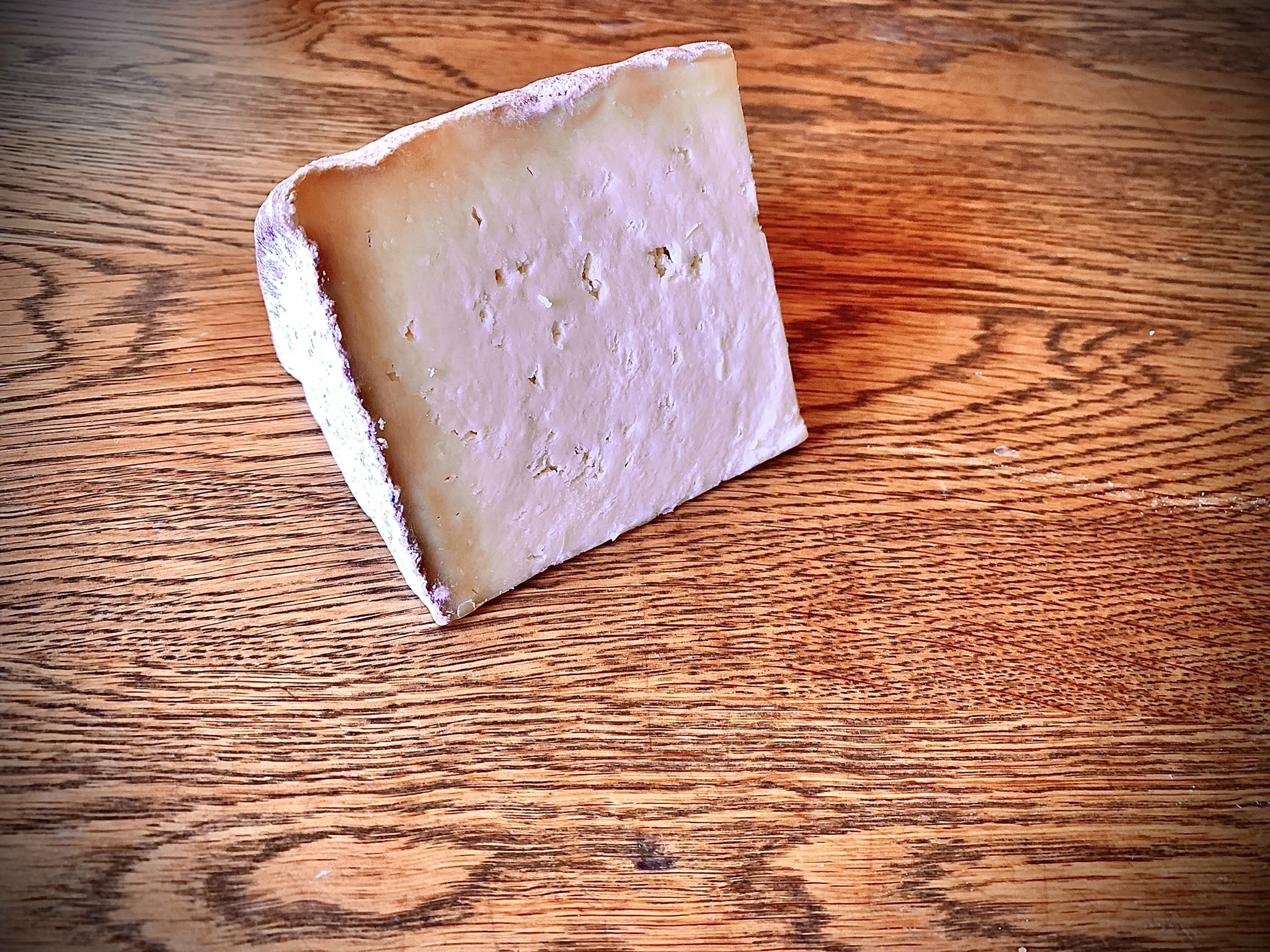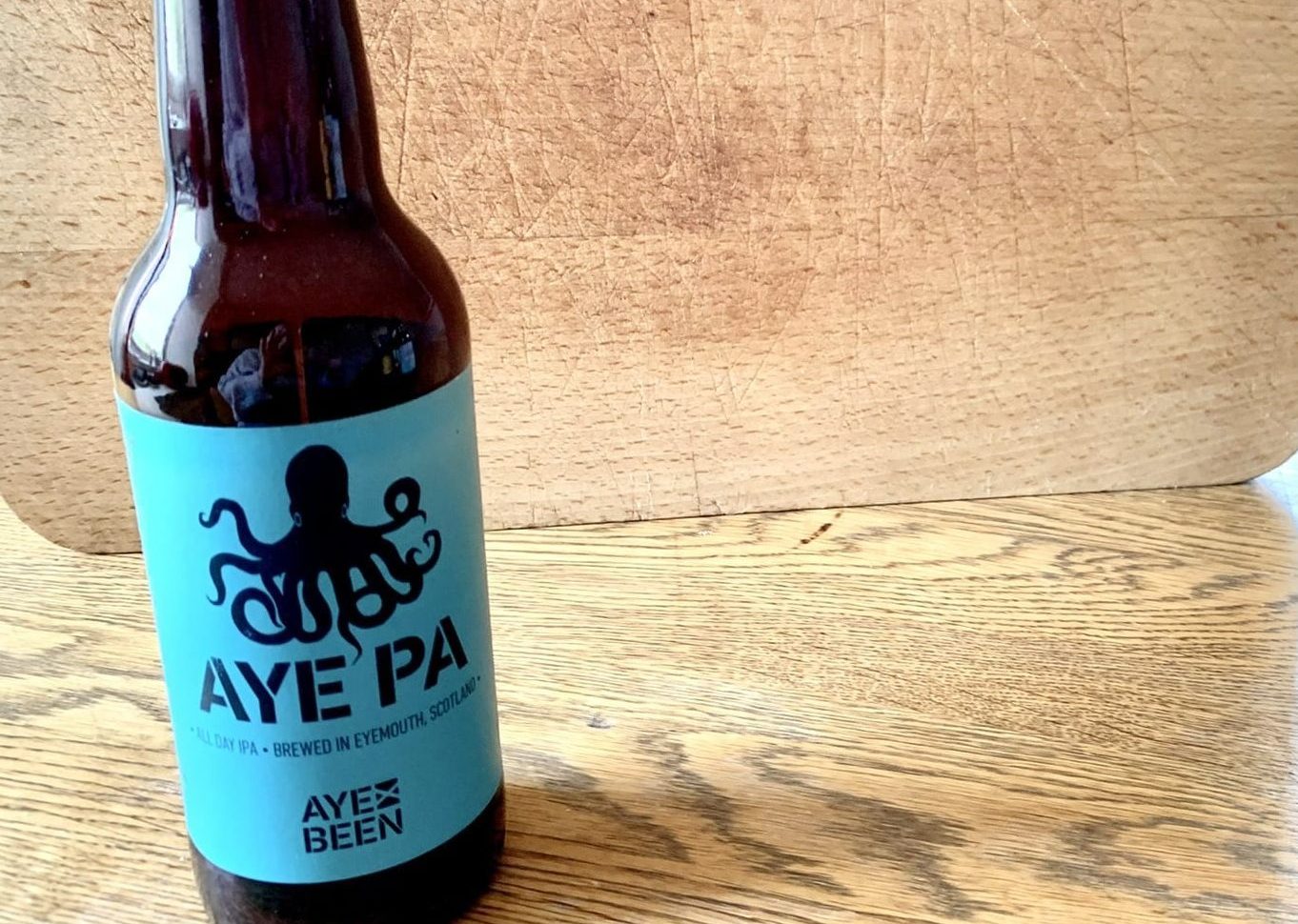Cheese of the month – Swaledale Traditional

My cheese of the month originates from the Yorkshire Dales and is one of the oldest surviving British cheeses. Introduced to the region almost 900 years ago, it’s faced extinction several times over the centuries. Today it is still made using traditional methods, with a unique flavour which comes from the rich pastures and meadows that the cows graze on. This is the delicate and delicious Swaledale Traditional.
History of Swaledale cheese
Swaledale cheese is an example of a British territorial cheese. This means it’s named after the place it’s made, in this case in the valley of Swaledale in the Yorkshire Dales. Cistercian monks introduced the ewes milk cheese to Swaledale in 1150 after relocating from Normandy, France. They shared the recipe with the local farmers, who carried on the production after the dissolution of the monasteries in 1539.
Over the centuries, the production of Swaledale cheese changed. With the introduction of cattle to the region in the 17th century, famers made a move from sheep to cow’s milk.
The 20th century saw a decline in production and by 1980 only one farm, owned by Mr and Mrs Longstaff, was making Swaledale cheese. Following the death of Mr Longstaff in the early 1980s, Marjorie Longstaff sold her small holding and retired from cheese making. In 1986 she passed the original recipe for Swaledale cheese onto the Richmond-based Reed family. With Mrs Longstaff’s guidance, they founded the Swaledale Cheese Company in 1987. The process to make the cheese has stayed the same ever since. Both sheep and cow milk versions of the cheese were awarded Protected Designation of Origin (PDO) status in 1996.
Current owners Richard Darbishire and Bengt Odner took over the business in 2019. Due to an issue with the business lease they were forced to move a few years ago to the nearby town of Leyburn. This meant the PDO status was lost, because the production of the cheese has moved outside of Swaledale. However the team are hoping to apply for Protected Geographical Indication (PGI) status.
Production of Swaledale cheese
The production process of Swaledale cheese starts with the delivery of locally sourced milk to the creamery. The milk is pasteurised to remove any harmful bacteria before being added to a vat with the culture, rennet and organic spices. Once the solid curd has separated from the liquid whey, it is cut and the curd sinks to the bottom of the vat. The whey is drained from the vat and the curd is cut into smaller pieces and added to moulds. Weights are added on top of the moulds to shape the cheese and draw out even more moisture. Once they have been pressed, the cheeses are removed from the moulds, brined and left to mature.
The creamery also produces blue and smoked versions of the cheese. All the cheeses are suitable for vegetarians and are made without preservatives. Swaledale Traditional shares similarities with another Yorkshire-produced cheese, Wensleydale, but is slightly creamier and more delicate in flavour.
Key facts
| From: | Yorkshire, England |
| Milk: | Cow’s milk |
| Age: | Aged for 8 months + |
| Strength and style of cheese: | Medium, hard, crumbly |
| Vegetarian: | Yes |
| Pasteurised: | Yes |
| Tasting notes: | Creamy, buttery, nutty, lemony, salty, milky |
Drinks pairing
This cheese is very special and incredibly moreish. It’s crumbly and creamy with a well-flavoured rind, which is almost tobacco-like in flavour. There’s a subtle touch of acidity and it melts in the mouth.
I paired this cheese with Aye PA, produced by the Aye Been Brewing Company based in the small town of Eyemouth in the Scottish Borders. The company has been operating since September 2019 and have a range of delicious beers to choose from. Their Blonde Ale took home Gold at the 2021 Scotland Independent Beer Awards (SIBA).
The slight bitterness from the IPA pairs perfectly with the acidity in the cheese and brings out even more creaminess. You also get the delicate flavour of bitter almonds and cherry with the pairing and there’s a lightness to the IPA that allows the cheese to shine. This is a beer that would match well with many British cheeses and it’s definitely one to seek out if you’re in the region. If you can’t get hold of Aye PA, another hoppy IPA or a Yorkshire bitter would marry well with this cheese.
Looking for other drinks options? A dry white wine would complement the citrus notes in the cheese, as would a light red, such as Gamay or Pinot Noir. It’s such a special cheese that it would be worth cracking open your favourite bottle of fizz to enjoy alongside it.
Sadly, there has been a massive decline in the number of traditional farmhouse cheeses being produced in Britain. This is an extraordinary tale of a cheese being saved from extinction, not once, but three times. For that reason I would urge you to seek out Swaledale Traditional. It’s an iconic cheese that deserves celebrating.

